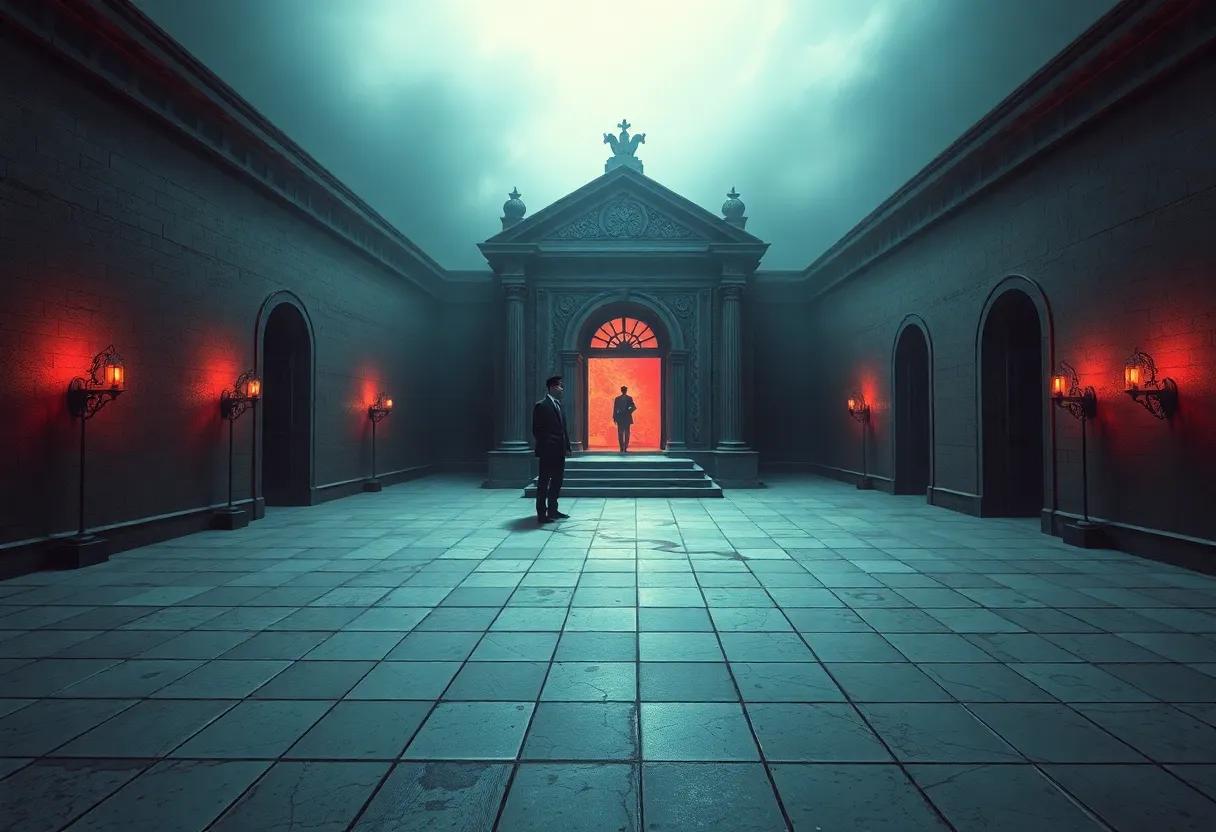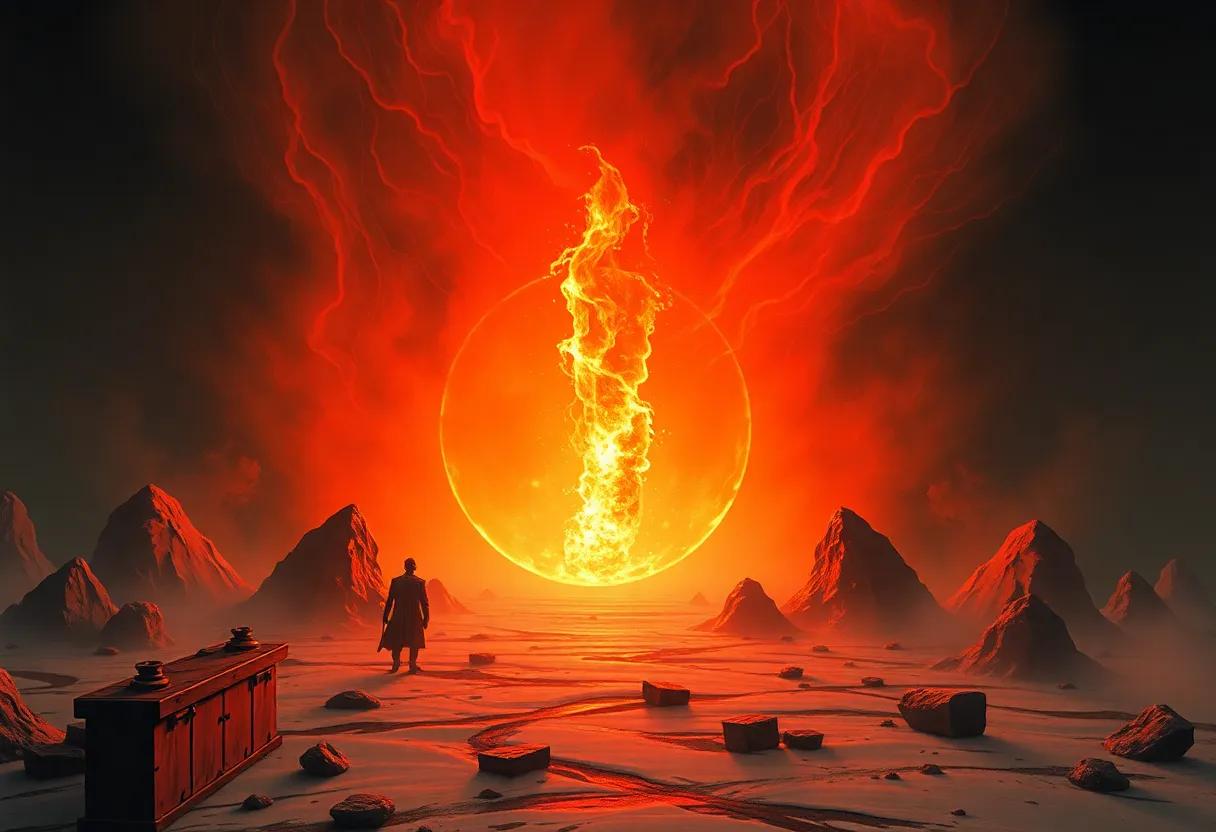Diving into the shadowed alleys of Victorian London, Alan Moore’s From Hell invites readers to confront a narrative as labyrinthine and haunting as the city it depicts. This graphic novel, blending meticulous historical detail with an unsettling exploration of humanity’s darker impulses, has long fascinated both literary enthusiasts and graphic storytelling aficionados alike. In this review, we will unravel the layers of Moore’s complex opus, examining how From Hell transcends conventional crime tales to probe deeper questions about society, identity, and the nature of evil itself.
Exploring the Intricate Plot Layers and Historical Depth in Alan Moore’s From Hell
Alan Moore’s From Hell operates on multiple narrative planes, weaving an intricate tapestry that both intrigues and challenges its readers. The plot masterfully intertwines fact and fiction,plunging deep into the fog-shrouded alleys of Victorian London while unraveling the psychology behind one of history’s most infamous serial killings. Beneath its graphic novel surface lies a dense web of symbolism and social critique,where every frame pulses with layers of meaning-from esoteric mythology to the grim realities of class struggle. Moore’s storytelling defies straightforward categorization, demanding active engagement as it threads historical documents, conspiracy theories, and haunting speculation into a mosaic as complex as it is compelling.
The historical depth of the narrative enriches the reading experience by grounding the horror in a believable and meticulously researched world. Characters are not simply players in a murder mystery; they become living embodiments of the cultural anxieties and political tensions of late 19th-century england. This complexity is reflected in the interplay between historical fact and Moore’s fictional reinterpretation. Consider the following elements that serve as narrative anchors:
- Historical figures: Real personas like Sir William Gull are given intense psychological depth, transforming them from mere historical footnotes into pivotal forces within the story.
- Period Atmosphere: Detailed depictions of Victorian architecture, social rituals, and hidden societies immerse readers in the oppressive ambiance of the era.
- Mythological Underpinnings: Occult symbolism and Masonic conspiracies provide a framework that elevates the story beyond a mere whodunit.
| Element | Purpose | Effect on Story |
|---|---|---|
| Jack the Ripper Case | central mystery | Drives plot and thematic exploration |
| Sir William Gull | Historical antagonist | Blurs line between myth and reality |
| Victorian London | Setting and atmosphere | Creates immersive socio-political context |
| Masonic Symbolism | Underlying motif | Suggests hidden power dynamics |
A Deep Dive into the Psychological Complexity of Characters Portrayed in from Hell
Alan Moore’s From hell stands as an intricate labyrinth of human psyche rendered in graphic form, where characters breathe with unsettling depth and contradictions. The novel’s complex portrayal of Jack the Ripper transcends mere villainy; he becomes a distorted mirror reflecting society’s darkest fears and festering wounds. This psychological layering invites readers to explore not just the monstrous acts, but the fractured minds behind them. The interplay of obsession, paranoia, and fragile sanity is meticulously woven, revealing how trauma and environment yield a volatile cocktail of human behavior. Each figure, from the cryptic detectives to the haunted london denizens, pulsates with a palpable internal struggle that adds richness to every narrative thread.
Moore masterfully exploits narrative techniques and visual symbolism, allowing readers to dissect the characters through multiple psychological lenses. The following elements highlight the novel’s sustained focus on mental intricacy:
- Duality of Identity: Characters are frequently portrayed wrestling between societal roles and primal instincts, blurring good and evil.
- Fragmented Reality: Visual motifs depict fractured perspectives, echoing mental disintegration and instability.
- Obsession as Motive: The consuming nature of obsession drives many character arcs, revealing psychological traps rather than mere evil intent.
| Character | Psychological Trait | Symbolism |
|---|---|---|
| jack the Ripper | Fragmented identity | Shattered mirror |
| Frederick Abberline | Obsessive pursuit | Labyrinth |
| Mary Kelly | Victim and enigma | Veil |
The Use of Visual Storytelling and Artistic Techniques That Define From Hell’s Unique Atmosphere
At the heart of From Hell lies a masterful use of visual storytelling that amplifies its grim, unsettling tone. Eddie Campbell’s artwork conveys a raw, textured world drenched in shadow and fog, perfectly mirroring the murkiness of the Whitechapel streets. The interplay between light and darkness isn’t merely aesthetic but a narrative tool, guiding readers through a labyrinth of mystery and menace. Panels ofen blend the grotesque with the mundane, creating a haunting rhythm where every frame feels weighed down by dread. This technique, combined with Alan Moore’s dense, meticulous scripting, ensures that the atmosphere is not just seen but felt-a creeping unease that lingers long after the page is turned.
Several artistic choices contribute to this unique mood, including:
- Monochromatic palettes interspersed with subtle washes of muted colors, enhancing the historical grime
- Sketch-like line work that evokes both impermanence and decay
- Deliberate pacing of panels, often breaking traditional layouts to unsettle the reader’s eye
- Integration of cryptic symbolism embedded within the visuals to deepen thematic resonance
To visualize how these elements translate structurally, the table below outlines key visual components alongside their narrative effects:
| Visual Technique | Narrative Effect |
|---|---|
| Chiaroscuro lighting | Highlights moral ambiguity and secrecy |
| Textured Inking | Conveys the grittiness of Victorian London |
| Nonlinear Panel Flow | Reflects fragmented memories and chaos |
| Symbolic Imagery | Imbues scenes with foreshadowing and mysticism |
How From hell Balances Fact and Fiction While Portraying the Jack the Ripper Mystery
Alan Moore’s From Hell walks a delicate tightrope between historical authenticity and imaginative storytelling, crafting a narrative that respects the facts while allowing room for chilling speculation.By skillfully integrating documented details-like the police reports, victim backgrounds, and period-specific London settings-with darker mythological and psychological elements, the graphic novel invites readers to question what is known and what lurks beneath the surface. This blend not only enriches the storytelling but also adds layers of complexity to the infamous case, transforming the familiar details into a haunting exploration of human nature and societal decay.
The graphic novel employs a carefully curated mix of historical accuracy and fictional invention, evident in its portrayal of characters and events.Such as:
- victims portrayed with dignified humanity, drawing from real-life demographics and backgrounds to avoid sensationalism.
- Invented dialogues and inner monologues that reveal psychological motivations absent from official records.
- Use of symbolic imagery to deepen thematic resonance without distorting factual timeline.
| Aspect | Historical Element | Fictional Element |
|---|---|---|
| Setting | Victorian London streets and landmarks | Recurring motifs of darkness and decay |
| Characterization | Profiles based on real suspects and witnesses | psychological depth and motive exploration |
| Plot | Chronology of murders and investigations | Theory on the killer’s identity intertwined with conspiracy |
Through this balance, From Hell achieves a captivating atmosphere-a bridge between the tangible evidence of history and the enigmatic shadows of unknown truth. This approach not only respects the source material but also challenges readers to engage critically, questioning how much of history is shaped by interpretation and storytelling.
Thematic Analysis of Morality, Madness, and Victorian Society Within From Hell
Alan Moore’s From hell delves deep into the murky strata of Victorian England,expertly weaving a story where morality and madness collide amidst societal decay. The graphic novel challenges readers to question the rigid moral frameworks of the era, portraying characters caught between the veneer of civility and the lurking darkness beneath. This tension manifests vividly through the protagonists’ psychological struggles, which echo the chaotic landscape of Whitechapel. Morality, in Moore’s narrative, is not a fixed compass but a fluctuating force-sometimes corrupt, sometimes enlightening-reflective of the complex human psyche grappling with the horrors unfolding around them.
Victorian society itself stands as a silent yet potent character,its hypocrisies and class disparities creating fertile ground for madness to flourish.From Hell uses historical events to comment on issues such as:
- The dehumanization bred by poverty and urban overcrowding
- The suppression of female agency amidst patriarchal norms
- The psychological toll of societal expectations and isolation
These themes intertwine, illustrating how societal constructs both shape and are shattered by the characters’ descent. The complexity of this interplay can be summarized in the table below, capturing the dynamic relationship between morality, madness, and societal pressures.
| Theme | Manifestation | Impact on Characters |
|---|---|---|
| Morality | Blurred lines between right and wrong | Doubt, guilt, and conflicting choices |
| Madness | Psychological unraveling and obsession | Isolation, paranoia, and violence |
| Victorian Society | Class divide and repression | Entrapment, resistance, and desperation |
Examining the Role of Symbolism and recurring Motifs That Enrich From Hell’s Narrative
Alan moore’s From Hell transcends mere storytelling by weaving a complex tapestry of symbols and motifs that deepen the narrative’s dark exploration of the Jack the Ripper saga. One of the most pervasive symbols is the ominous london fog, which shrouds the city in mystery and mirrors the uncertainty and moral ambiguity faced by the characters. The fog acts almost like a character itself,obscuring truth and reality,reinforcing the sense of chaos lurking beneath Victorian society’s rigid veneer. Similarly,the recurring motif of mirrors and reflections serves as a meditation on duality,identity,and the hidden selves-themes that echo the psychological turmoil of both the victims and the investigators.
Adding further layers of meaning, Moore employs a rich palette of esoteric and historical references, presenting recurring patterns of alchemy, tarot, and the tarot’s “Wheel of Fortune” card, which symbolizes the cyclical nature of fate and the inescapable pull of destiny. These elements are succinctly captured in the table below, illustrating how symbolism is intertwined with character arcs and plot progression:
| symbol/Motif | Narrative Significance | Associated Characters |
|---|---|---|
| London Fog | Masks truth, breeds uncertainty | detectives, victims |
| Mirrors & Reflections | Highlights duality and hidden identities | Sir william gull, Police |
| Alchemy & Tarot | Cycles of fate and transformation | Moore’s Narrator, Ritualists |
ultimately, these symbols contribute to a multi-dimensional experience, enriching the reader’s engagement by prompting reflection on the nature of evil, chance, and the socio-political undercurrents of the era. Through the consistent recurrence of these motifs, From Hell invites readers to unravel the darkness not simply as a historical mystery but as a profound commentary on human psyche and society.
The Impact of From Hell on Graphic Novels and Its influence on Modern Storytelling
Alan Moore’s From Hell stands as a monumental pivot in the evolution of graphic novels, blurring the lines between historical fiction, horror, and psychological thriller with unprecedented nuance. Its meticulous research combined with Eddie Campbell’s gritty, evocative artwork crafts a narrative that demands readers engage with the material on multiple levels. This complex layering of text and image challenged the traditional comic book format, elevating the medium into a mature form capable of exploring deeply unsettling themes with intellectual rigor. The work’s non-linear storytelling and rich character advancement have as become influential benchmarks, inspiring countless creators to push beyond conventional narrative confines.
Influence on Modern Storytelling:
- Integration of historical depth with graphic storytelling.
- Use of unreliable narrators and fragmented narratives to evoke psychological complexity.
- Emphasis on atmosphere and mood through stark, expressionistic illustrations.
- Blurring genre boundaries to attract diverse readerships.
| Aspect | Impact | Example in Modern Works |
|---|---|---|
| narrative Style | Fragmented, multi-viewpoint storytelling | Mr. Mercedes by Stephen King adaptations |
| Artistic Approach | Expressive, raw black-and-white imagery | Black hole by Charles Burns |
| Thematic Depth | Explores social and psychological darkness | Jessica Jones series |
Critical Reception and Cultural Significance of From Hell Since Its Publication
From Hell has been hailed as a monumental achievement in graphic storytelling, earning widespread acclaim for its meticulous research and haunting narrative. Critics have often lauded Alan Moore and Eddie Campbell for transcending genre boundaries, crafting a complex tapestry that intertwines history, conspiracy, and psychological depth. The novel’s dense layering of fact and fiction challenges readers to reconsider the legacy of the infamous Jack the Ripper case,while its unflinching exploration of Victorian London’s socio-political landscape has been praised for adding gravitas uncommon in graphic novels.
Its cultural resonance extends beyond literary circles, inspiring various adaptations and influencing the true crime genre in visual media.Key elements contributing to its lasting impact include:
- Historical Authenticity: Rich period detail that immerses audiences in the foggy streets and shadowed alleys of late 19th-century London.
- Philosophical Undertones: Exploration of themes such as fate, justice, and societal decay that elevate the story’s complexity.
- Innovative Visual Storytelling: campbell’s stark black-and-white illustrations powerfully complement Moore’s dense prose.
| Aspect | Critical Response | Legacy |
|---|---|---|
| Research | Praised for unprecedented scholarly attention | Set a benchmark for historical fiction in comics |
| Art Style | Noted for raw and immersive black-and-white imagery | Influenced a generation of graphic novel artists |
| Thematic Depth | Commended for philosophical and psychological complexity | Resonates in postmodern interpretations of crime narratives |
Specific Recommendations for Readers Who Appreciate Dark Historical Fiction and Graphic Novels
For readers drawn to the murky depths of dark historical fiction intertwined with the visceral artistry of graphic novels, From Hell stands as a masterclass in narrative and visual storytelling.Alan Moore’s meticulous attention to Victorian London’s grim ambiance, combined with eddie Campbell’s evocative black-and-white illustrations, creates an immersive experience that transcends traditional genre boundaries. This is not merely a retelling of the Jack the Ripper saga; it’s an exploration of societal decay, psychological horror, and conspiratorial whispers that challenge the reader to question what lurks beneath the surface of history.
If you cherish stories where every shadow carries a secret, and where the line between fact and fiction blurs, this graphic novel demands a place on your shelf. Consider pairing your reading with these carefully curated titles and authors, each echoing a similar dark tone and complexity:
- Sarah Waters – Fingersmith: A labyrinthine tale of Victorian intrigue and secrets.
- Charles Burns – Black Hole: A graphic novel drenched in distortion, youth, and dread.
- Brett Easton Ellis – Lunar Park: Blurring reality with psychological horror.
- Scott snyder – batman: The Black Mirror: Gotham’s darkness reflected through chilling narratives.
| Title | Author | Why It’s Recommended |
|---|---|---|
| Jeremiah | Hermann | Dark post-apocalyptic tone with complex characters |
| The League of Unusual Gentlemen | Alan Moore | Historical figures reimagined through a shadowy lens |
| Deadwood Dick | Peter Brandvold | Grim Western settings with morally ambiguous protagonists |
Why From Hell Remains a Must-read for Fans of True Crime and Complex Narrative structures
Delving into From Hell offers readers a labyrinthine journey where true crime intersects with refined narrative architecture. Alan Moore masterfully interweaves documented history with speculative fiction,creating a tapestry that challenges conventional storytelling. fans of true crime will appreciate the meticulous attention to detail-the chilling reenactments of Jack the Ripper’s crimes are grounded in extensive research, yet never lose their haunting mystique. The story avoids simplistic villainy, instead exploring psychological complexity and social undercurrents of Victorian London. This nuanced approach elevates the graphic novel beyond typical crime retellings, inviting readers to interrogate the nature of evil itself.
The structural design of From Hell is equally compelling, presenting a multi-layered narrative that rewards close reading. Moore employs shifting perspectives, fragmentary timelines, and dense symbolism to create a story as intricate as the city’s foggy alleyways. Key elements include:
- Non-linear narration: Time jumps that weave past and present seamlessly.
- Multiple viewpoints: Insight into characters’ minds, from detectives to victims.
- Embedded historical context: Political and societal influences enrich the plot.
| Aspect | Impact on Reader |
|---|---|
| Research Authenticity | Enhances immersion and believability |
| Complex Characters | Fosters empathy and critical thinking |
| Symbolism & Themes | Encourages deeper interpretation |
this work isn’t just a recounting of a notorious series of murders; it’s an exploration of narrative boundaries and the dark veins running through history and humanity. for those passionate about true crime or intricate storytelling, From Hell remains an unparalleled experience that demands both emotional engagement and intellectual curiosity.
Unpacking the Collaborative Genius Between Alan Moore and Artist Eddie Campbell in From Hell
Alan Moore’s intricate storytelling finds its perfect visual counterpart in Eddie Campbell’s art, creating an atmosphere in From Hell that is both chilling and engrossing. Campbell’s use of stark black-and-white contrasts and sketch-like textures enhances the eerie, claustrophobic world Moore conjures-a world where history, myth, and horror collide. Their collaboration is a masterclass in balance; the narrative’s dense, philosophical layers are punctuated by art that speaks volumes through subtle expressions and carefully composed scenes, allowing readers to absorb the complexity without feeling overwhelmed.
What sets this partnership apart is their shared commitment to authenticity and depth. Together, they employ a wide range of techniques to immerse readers, including:
- Historical accuracy fused with speculative insight, giving weight to every detail.
- Visual symbolism intricately woven into panels, inviting multiple readings.
- Emotional restraint in the art that echoes the brutal understatement of Victorian England.
Here’s a simple breakdown showcasing how their collaboration enhances key storytelling elements:
| Element | Alan Moore’s Contribution | Eddie Campbell’s Contribution |
|---|---|---|
| Narrative Depth | Complex, layered prose with philosophical undertones | Minimalist visuals that highlight narrative beats |
| Atmosphere | Detailed historical context | Shadow-heavy, moody illustrations |
| Characterization | Rich, nuanced dialog and inner thoughts | Expressive line work capturing subtle emotions |
how From Hell Challenges Conventional Views on Crime, Justice, and Humanity
Alan Moore’s From Hell dismantles traditional narratives surrounding crime and justice, compelling readers to reconsider the simplistic binaries of good and evil. Rather than painting Jack the Ripper as a mere villain, the graphic novel delves into the *psychological, social, and political forces* that blur the lines between perpetrator and victim. This exploration reveals a layered reality where justice is frequently enough elusive, shaped by societal prejudices and institutional corruption. The story’s refusal to offer clear answers forces a confrontation with the uncomfortable truth that humanity’s darkest acts are interwoven with complex human motivations and fractured systems of power.
What really sets this work apart is its profound meditation on the human condition. It challenges readers to empathize with characters who exist in moral gray zones, highlighting the fragility of identity and the pervasive influence of trauma. Key themes highlighted include:
- The interplay between fate and free will in criminal behavior
- The role of authority figures in shaping or concealing truth
- How societal neglect fuels cycles of violence
- The psychological dimension of evil beyond mere criminality
| Aspect | Traditional View | From Hell‘s interpretation |
|---|---|---|
| Crime | Clear-cut evil act | Complex symptom of societal imbalance |
| Justice | Retribution and punishment | Ambiguous and frequently enough unattainable |
| Humanity | Divided into heroes and villains | Fluid, shaded in moral ambivalence |
Behind the Scenes with alan Moore The Visionary Mind Behind From Hell
Alan Moore’s creative process behind from hell is nothing short of an intricate tapestry woven with historical research, occult symbolism, and psychological depth. Moore delves beyond the surface of the infamous Jack the Ripper murders,transforming fact into a layered narrative that challenges readers to confront the darker edges of human nature. His dedication to authenticity is evident in the way he consulted vast archives, Victorian lore, and esoteric texts to construct a world where every detail amplifies the story’s eerie atmosphere.
His collaboration with artist Eddie Campbell further elevates the work’s haunting tone, blending gritty visuals with dense storytelling. Moore himself described this project as a journey into the unconscious - a quest not merely to retell history but to unlock the philosophical undercurrents beneath it. Some key elements that shaped the creative journey include:
- Historical Immersion: Rigorous examination of late 19th-century London, including street maps and newspaper archives.
- Symbolism & Mythology: Integrating alchemical motifs and Freemason theories to deepen the narrative’s mystique.
- Psychological Exploration: Character-driven insights into madness, control, and social decay.
| Aspect | influence | Effect on Narrative |
|---|---|---|
| Victorian London | Urban decay & Class Divide | Creates oppressive atmosphere highlighting societal fractures |
| Occult Symbolism | Masonic Rituals & Mysticism | Weaves mystery and hidden agendas |
| Character Psychologies | Trauma & Madness | Evokes empathy and horror concurrently |
In the shadows cast by Alan Moore’s From Hell, readers find a labyrinth of history, horror, and humanity intertwined with unyielding detail and haunting introspection.This graphic novel does not merely recount a tale of Jack the Ripper-it invites us to question the darkness residing in society and within ourselves. As we close its pages, we are left not with easy answers, but with a lingering contemplation of the blurred lines between myth and reality, justice and obsession. From Hell is a profound journey through the murkiest corners of the human condition, one that lingers long after the final panel fades to black.








